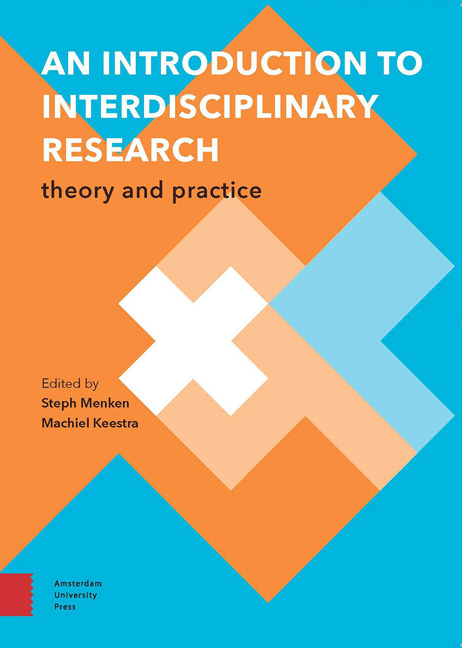Book contents
- Frontmatter
- Contents
- Acknowledgements
- Preface
- Part 1 The Handbook - ‘The What’
- 1 Introduction
- 2 What is Science? A Brief Philosophy of Science
- 3 The Disciplines
- 4 Interdisciplinarity
- 5 Complexity: The Main Driving Force Behind Interdisciplinarity
- 6 Interdisciplinary Integration
- Part 2 The Manual - ‘The How’
- 7 The Interdisciplinary Research Process
- 8 The Problem
- 9 Theoretical Framework and Research Question
- 10 How to Collect and Analyze your Data
- 11 Discussion and Conclusion(s)
- Part 3 Interdisciplinary Research in Practice
- 12 Interdisciplinary Research Example: Fogponics
- 13 Interdisciplinary Careers
- Further Reading
- References
- Colophon
7 - The Interdisciplinary Research Process
- Frontmatter
- Contents
- Acknowledgements
- Preface
- Part 1 The Handbook - ‘The What’
- 1 Introduction
- 2 What is Science? A Brief Philosophy of Science
- 3 The Disciplines
- 4 Interdisciplinarity
- 5 Complexity: The Main Driving Force Behind Interdisciplinarity
- 6 Interdisciplinary Integration
- Part 2 The Manual - ‘The How’
- 7 The Interdisciplinary Research Process
- 8 The Problem
- 9 Theoretical Framework and Research Question
- 10 How to Collect and Analyze your Data
- 11 Discussion and Conclusion(s)
- Part 3 Interdisciplinary Research in Practice
- 12 Interdisciplinary Research Example: Fogponics
- 13 Interdisciplinary Careers
- Further Reading
- References
- Colophon
Summary
Although there are a lot of similarities between the disciplinary research process (with which you might already be familiar) and the interdisciplinary research process, there are some additional questions to answer, steps to perform, and challenges to overcome with regard toin the latter. We have therefore developed a model for doing interdisciplinary research (see box 5 and figure 9). Building on this model, we describe the different stages of the research process and the additional challenges interdisciplinary researchers are facing.
In part 1, we mentioned several drivers of interdisciplinary research, among which the inherent complexity of nature and society and the need to solve societal problems. However, in a student project you might not be pressured by such a driver to conduct interdisciplinary research, as the starting point may be different from academic research in practice. In some cases, students form a research team on the basis of their different educational backgrounds, and then collectively formulate a subject or a problem to investigate. Although the drivers described in part 1 might cover the problem or subject, the main driver in choosing a subject is usually the student's personal experience and practice.
The IIS model of interdisciplinary research
In figure 9 we present our model for interdisciplinary research. It describes a generalized research process, in which the following steps are distinguished: identify the problem or topic (i) and formulate the preliminary research question (ii) in the Orientation phase; develop the theoretical framework (iii), finalize the research question (iv) and sub-questions (vi) and research methods and design (vii) in the Preparation phase; collect and analyze the data (viii) in the Data phase; and interpret the results, draw conclusions and write the discussion (ix) in the Finalization phase. As convenient as this may seem, it is important to note that there is not really a standard research process, not only because research processes differ in practice, but also because what is considered a normal research process differs from discipline to discipline. Therefore, the model that is proposed here should serve as a guideline during your own research, not as a strict protocol.
In chapter 12, you will find an example of a complete interdisciplinary research project as carried out by students who used our model as a guideline. The example focuses on an innovative and sustainable form of greenhouse agriculture called Fogponics.
- Type
- Chapter
- Information
- An Introduction to Interdisciplinary ResearchTheory and Practice, pp. 51 - 56Publisher: Amsterdam University PressPrint publication year: 2016



